Motorola Moto G Review
by Brian Klug on December 18, 2013 2:00 PM EST- Posted in
- Smartphones
- Motorola
- Mobile
- *VA
- Cortex A7
- snapdragon 400
- Moto G
Motorola has embraced relatively stock Android since the launch of Moto X. I originally disliked how the Moto X wasn’t really stock, (cue the philosophical discussion about what stock really means), but truth be told the software preload is devoid of what I don’t like about the skinned, operator-adulterated stuff we’d get otherwise. It strikes perhaps the optimal balance between the two, what works is left intact, what tweaks there are seem to be the bare minimum to appease operators and make the experience better for the majority of users.
The Moto G doesn’t deviate from that formula. At launch, the Moto G comes running Android 4.3, the latest possible version supplied by Qualcomm for the platform inside.
Motorola has promised an update to Android 4.4 KitKat in January (probably near the end of the month), this aligns with the software roadmaps I’ve caught glimpses of. Remember that Motorola is still effectively an OEM and subject to the software release cadences of its silicon suppliers.
The Moto G’s unlocked and operator-free status makes it subject to a bit less than the operator-attached variants of the Moto X I’ve played with, like the AT&T address book and status indicator branding. On the Moto G there’s none of that, just the few tweaks that Motorola has added in, like Device ID, Assist, Migrate, Care, and of course their own camera application.
The delta between the Moto X and G on the software front really comes down to subtraction of features it lacks the hardware for. Specifically the Active Display notifications and interface which used a TI MSP430 and leveraged an AMOLED display, and the always-on voice activation (“OK Google Now”) which used a TI C55x DSP. It’s an easy to understand differentiation point between the two products that I can’t complain about, and although I enjoyed those two features, their absence doesn’t really dilute the software choices that make the Moto G enjoyable.
Moto G also adds an FM radio over Moto X. Inclusion of FM radio is something which remains oddly is absent from most flagship handsets, but a must have on the lower end devices.
Just like the Moto X, the bulk of these applications (Camera, FM radio, Boot Services) are updatable over the Play Store. Motorola has effectively decoupled a bunch of their own first party applications from the normal OTA process.
Again I can’t complain about Motorola’s software strategy for the Moto G. I almost hesitate to make the comparison, but Nexus ends up making flagships that are very competitive on cost in the high end segment, the space Moto G is competing in is entirely different. Having Android 4.3 and the promised upgrade to 4.4 within essentially a month is great, but real proof of Motorola’s commitment will be in continued software support beyond that update.


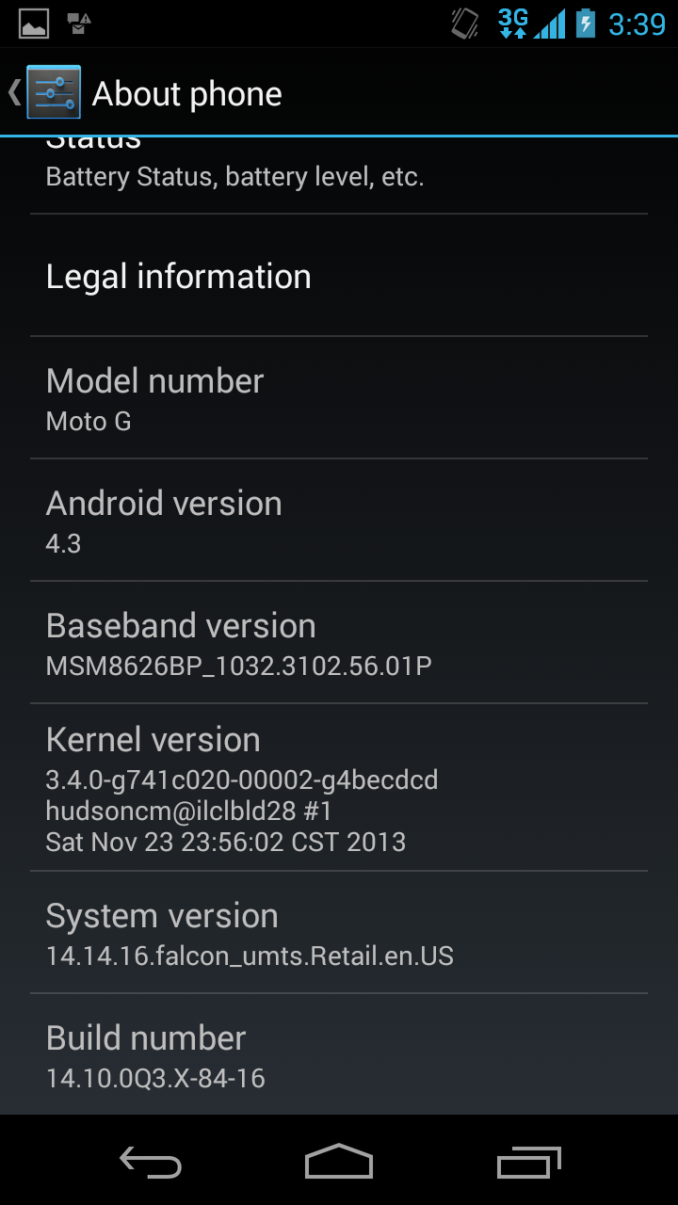
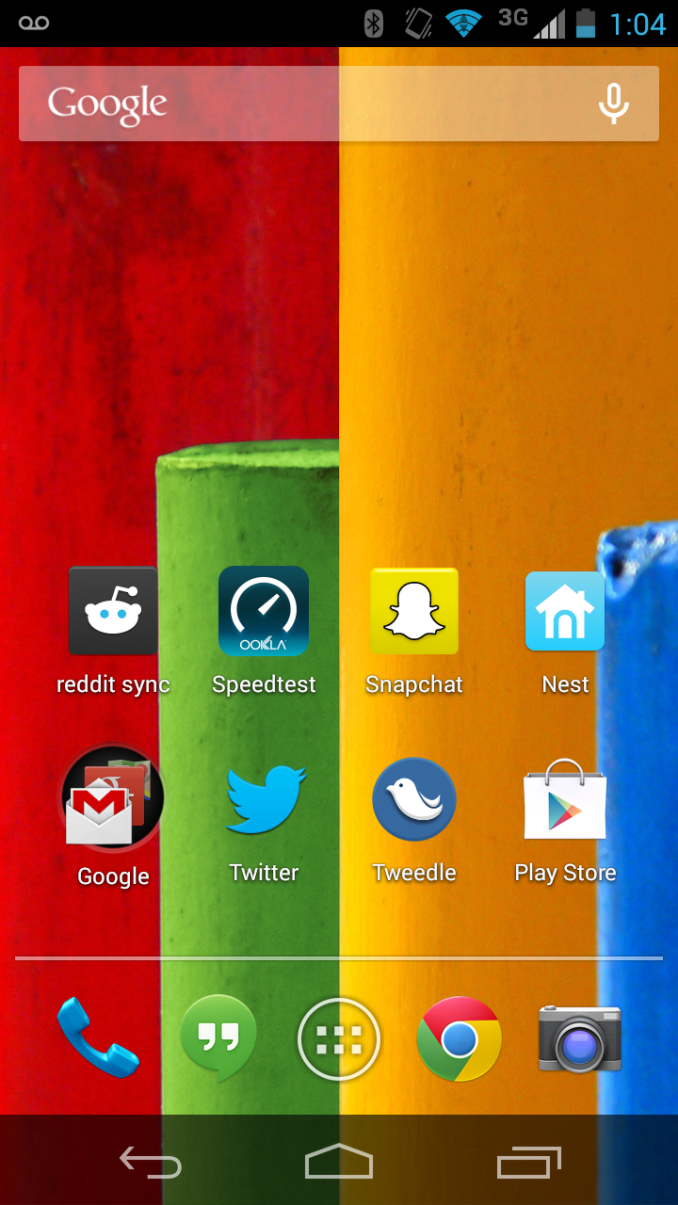
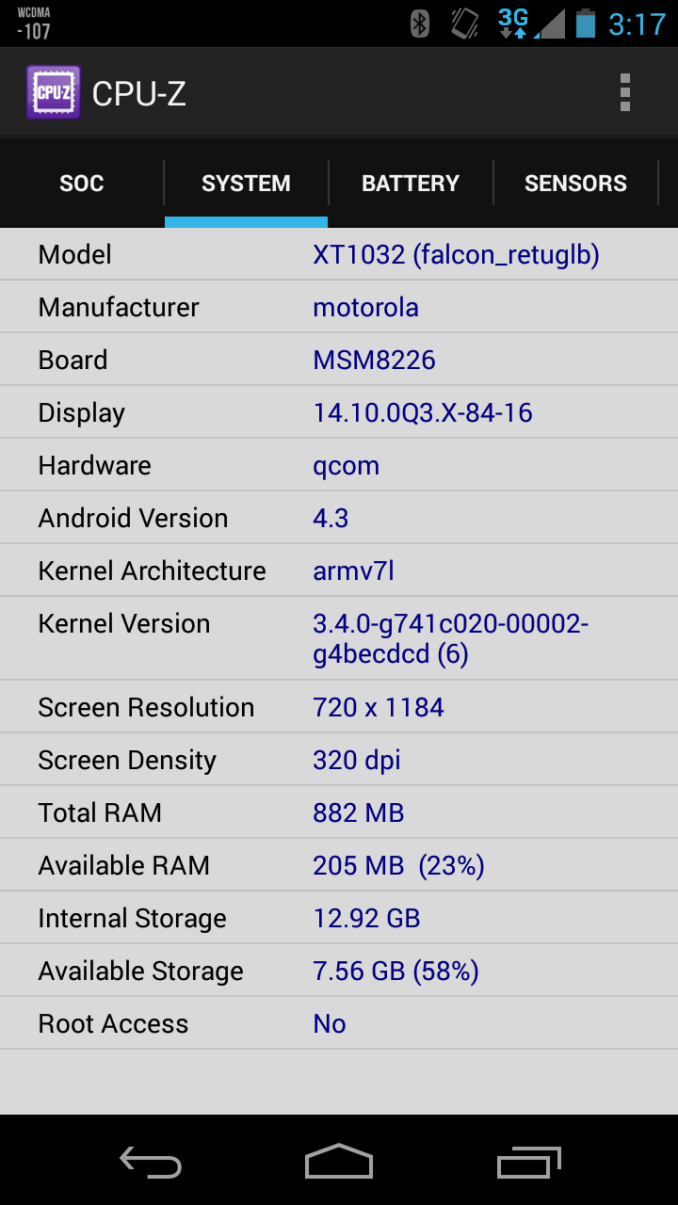
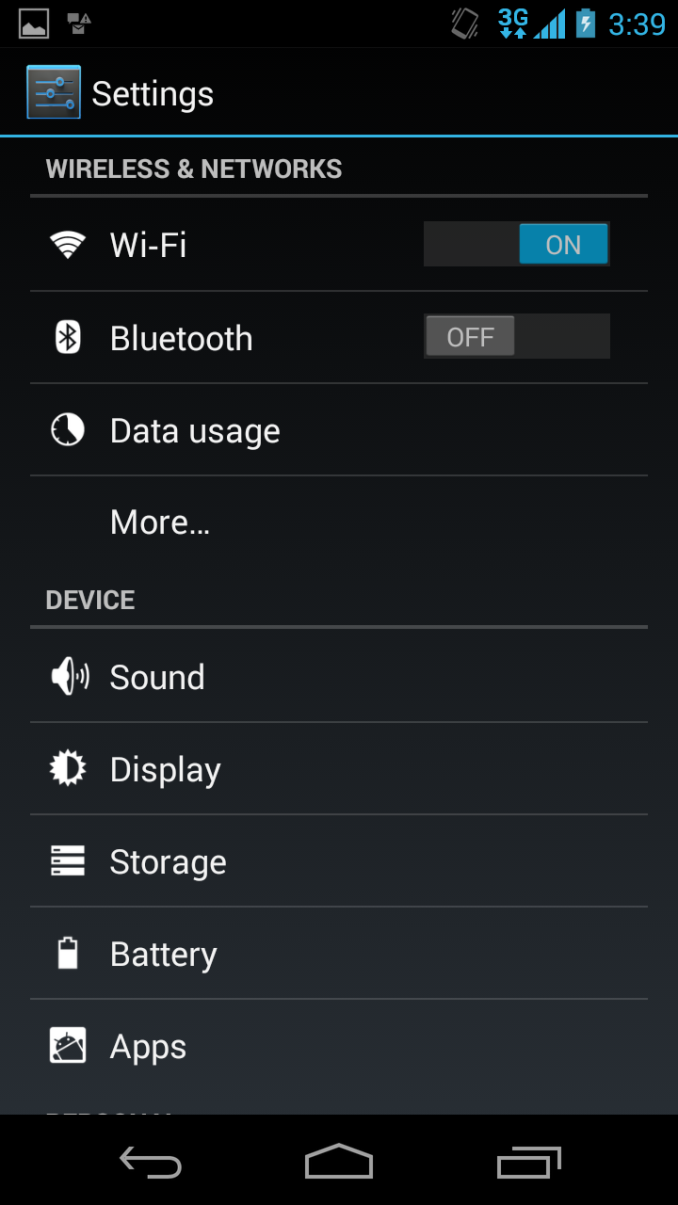
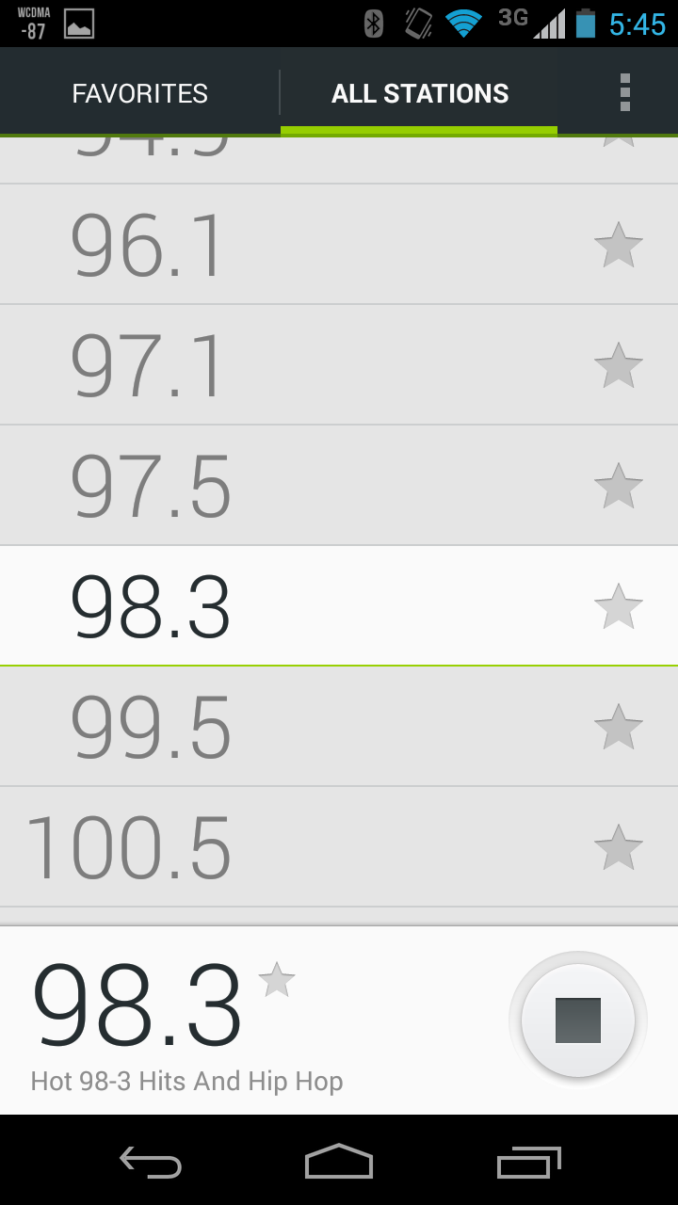
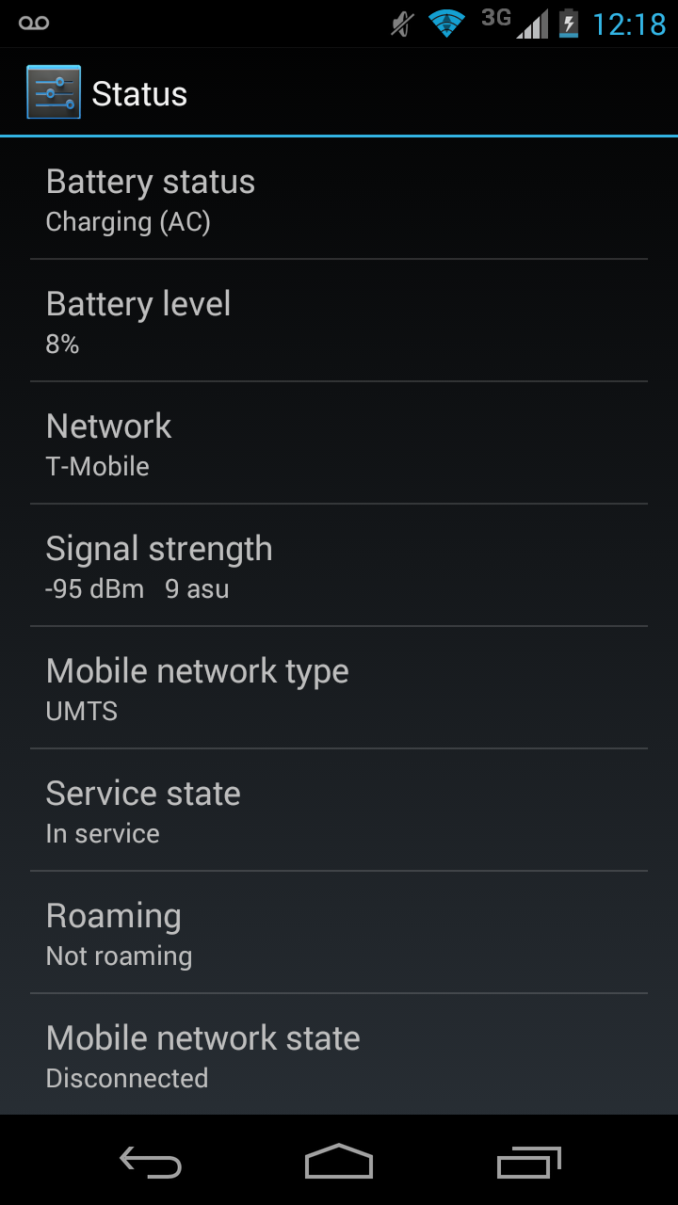








120 Comments
View All Comments
Death666Angel - Wednesday, December 18, 2013 - link
Um, what? Just did a bit of googling, the Nexus 4 had 4.4 at the end of November (25th is what I came up with most) and Moto X got 4.4 6 days ago on the 12th. Nexus 4 already has 4.4.2. So I have no idea what you are talking about, because it doesn't seem to be reality.cmikeh2 - Wednesday, December 18, 2013 - link
It's dependent on the carrier, but the Verizon version of the Moto X actually got 4.4 before the Nexus 4 did.shaduck007 - Saturday, January 4, 2014 - link
thanks for Mentioning the Lumia, it's 1/3 the price of the MOTO G.Thinking of what is the best value!!
Sam
fortelv999 - Wednesday, December 18, 2013 - link
?? They announced some weeks ago that the RAZR HD, MAXX HD and RAZR M would all get Kitkat sometime soon-ish, even the ATRIX HD i think, all the Snapdragon S4 familyfokka - Wednesday, December 18, 2013 - link
the atrix HD? i believe that when i see it.Bob Todd - Wednesday, December 18, 2013 - link
If you think a few months time is enough for a new parent company to take over and magically transform device support for phones that were in the pipeline for over a year, you don't know much about how acquisitions work or how long those kinds of transitions take in a large corporate environment.The proof will be evident once we see how quickly, if at all, the Moto X and Moto G are updated beyond 4.4. Being the absolute first non-Nexus device with 4.4 on the X, and getting it right around the same time as the still supported Nexus line was a great start. We'll see if they can keep it up. I'm cautiously optimistic, and I say all of this as a former Atrix owner who never got some planned updates.
Death666Angel - Wednesday, December 18, 2013 - link
"If you think a few months time" Google bought Motorola on August 15, 2011.Bob Todd - Thursday, December 19, 2013 - link
I should have looked it up before replying, but I was mainly responding to the "The phone was out several months AFTER Google's acquisition" comment. And what I said still holds true. Google announced plans to acquire Motorola Mobility on 8/15/2011. The acquisition didn't actually complete until 5/22/2012. The phones in question came out around September/October of 2012, which is indeed just a few months after the acquisition, and not long enough for Google to really have anything to do with their product planning.trynberg - Wednesday, December 18, 2013 - link
I guess you missed the news that Moto was upgrading the RAZR HD to 4.4 in 2014? Confirmed on Moto's website weeks ago.ollienightly - Wednesday, December 18, 2013 - link
i really don't know what you are wining about. razr hd has already been given green light for kitkat update. all you have to do now is being patient.